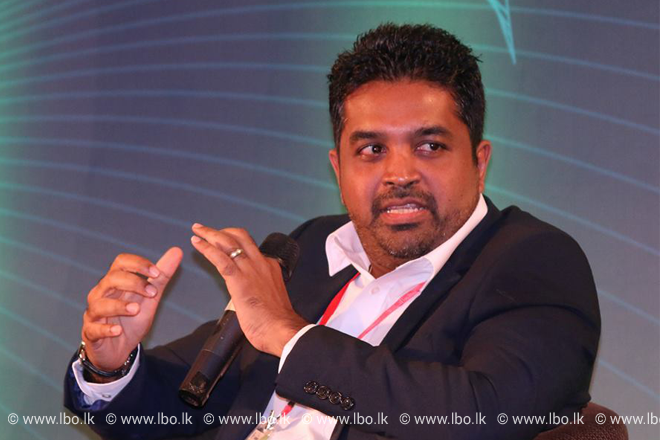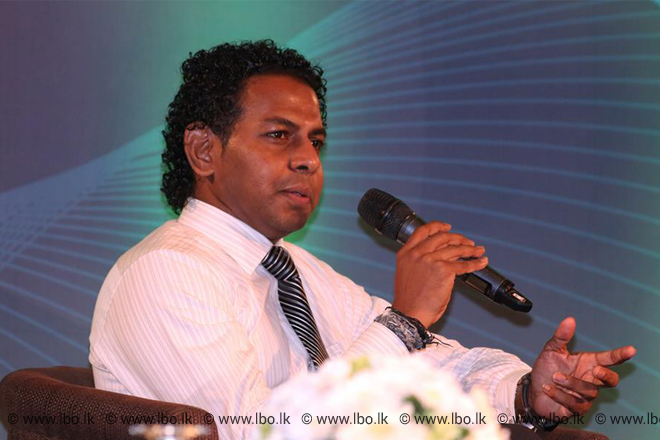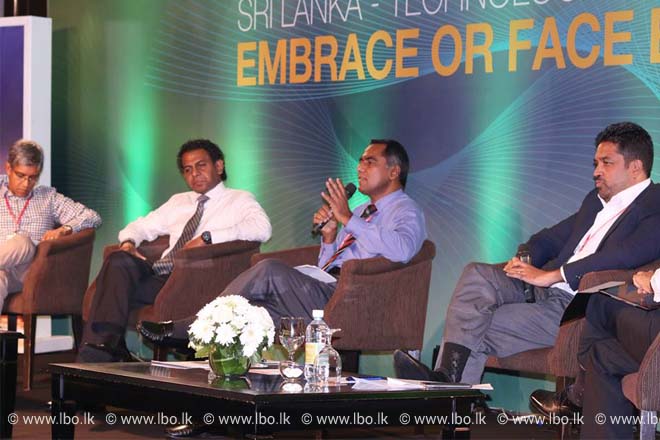July 21, 2015 (LBO) – Innovation can disrupt an organization, creating a new set of challenges to the leadership which some traditional companies are not aware of even, an official said.
“This might completely dislodge you from your present industry,” Deepal Sooriyarachchi, Commissioner and Chairman of Sri Lanka Inventors Commission said.
“And some of the established businesses may not even know from where these new challenges will come,”
“So this will have a completely different set of challenges and set of competencies at leadership level of organizations,”
A disruptive innovation is an innovation that helps create a new market and value network, and eventually disrupts an existing market and value network (over a few years or decades), displacing an earlier technology.
Most of the new era entrepreneurs make use of this to build a business which ultimately challenges the existing players in the industry.
The trend can be seen across every sector today with technology often leading the disruption.
“Finding solutions to the challenges relating to innovation or implementing them would be foremost as there would be several factors that would be affecting,” Nanda Fernando, Chief Operating Officer, Sampath Bank said.
“On the one hand there would be regulatory compliance which an organization would have to go through and on the other hand there will be the competitors and natural resistance coming from bottom to top and in certain industries there would be resistance from society as well,”
“So managing these would be the responsibility of the executive leadership.”
He says best way to adopt disruptive innovation is to allow innovation from top to bottom where everyone in an organization gets involved to add value and adopt to the technological changes as a team.
“An important factor in innovation is that it should be every body’s business and not restrict the top leadership,” Fernando said.
“We have to make sure we push the decision making process to the bottom of the pyramid enabling time and space for the top leadership to dream and make future plans,”
“It is very important that we invest in the future that will take us to the next level.”
But the question is how effective it can be?
Some larger organization in the world were challenged by startups through disruptive innovation.
A mobile application called Uber a cab referral service which works in android, iOS and Windows phones, has disrupted, transportation companies of some countries in the South Asia region.
The users with GPS capabilities of smartphones who has Uber app, allows both drivers and passengers know each other’s location.
San Francisco-based Uber entered Indonesia in August last year as part of its expansion across the Asia-Pacific region and Indonesian media report said the app has created havoc in the market creating competition for established taxis and corner-street tuk tuks and cabs.
So how do the traditional organizations or larger organizations react to disruptive innovation? How do the organizations absorb it?
“I don’t think you can do disruptive innovation within the organization if you are a large organization,”
Shanil Fernando, Managing Director Sri Lanka and SVP Engineering of Leapset said.

Shanil Fernando, Managing Director Sri Lanka and SVP Engineering - Leapset
“I don’t think that can happen and if that can happen that is very tough,”
“Why is that, it’s because you have invested in a business which is very large and the company making a lot of profit and potentially growing, so you have to try to keep the ship afloat, grow the existing business and now you have to think of something that potentially can change your entire business, that kind of thinking does not happen typically within the organization,”
“We believe the best way to go down the path of disruptive innovation is either to start a another company or buy into that kind of a company,”
“Because some time you don’t know from where the disruption is coming,”
“You do not how it is going to hit. You have a vague idea about how this is going to happen and the best thing you can do is to get some really smart people, put them in a room and work as a start up and start a new company or buy in to a company and ask them to disrupt the industry.”
Chief Information Officer of John Keells Holdings says that due to highly regulate corporate structures of big companies, collaboration, co innovation and co creation should be used in creating disruption and nurtured into the organization.
“At John Keells we will have challenges innovating at a pace that startups could,” Ramesh Shanmuganathan, Executive Vice President / Chief Information Officer, John Keells Holdings said.
“So we have set up a lab in SLIIT and plan to do the same with University of Moratuwa, because we feel that is the way we can incubate,”
“In corporate structures where there is a hierarchy where command and control prevail, is not an ideal state of mind for innovations and startups,”
“So we need to fuel that innovation and then bring it back to the corporate environment and then see what we could do.”
However Fernando says otherwise. Speaking about experience in adopting disruption innovation at Sampath Bank, Fernando said the bank bears a tolerance level for employees to make mistake to find a better solution in improving productivity.
“The first step is to relieve your employees from fear because there is a certain degree and risk of failure,” Fernando said.
“At Sampath bank we allow a certain percentage of short coming and absorb certain losses,”
“When it comes to tellers – the faster ones will give a good service to the customers but the margin of error can be bigger but a slower one will be more accurate but lack in service.”
“So we provide a certain level of tolerance for such things and also paving the way to experiment things which we feel an investment for the future.”
Nevertheless Shanmuganathan said, a country’s eco system or the context would also make an impact on disruptive innovation of an organization.

Ramesh Shanmuganathan, Executive VP / CIO - John Keells Holdings PLC
“We need to be innovative in how we look at disruption and how can we create disruption from Sri Lankan context,” Shanmuganathan said.
“What applies to America may not apply to Sri Lanka and then look at leadership quality need.”
“It’s all about creating eco systems. John Keells being hospitality, there is no reason why we cannot use Airbnb in terms of distribution channel and no reason why we can’t use Uber if it comes to Sri Lanka, ensuring our guests in the hotel will get a better experience and better value eco system,”
“It does not mean disruptive innovation should happen within your organization but if you can create that eco system which can disrupt the bigger eco system is good enough,”
“The mentality of all of us have to turn innovators overnight is not true,”
“If we can also leverage the innovation that is happening around us to create better value for our customers, that is where the fundamental value proposition lies,”
“The future currency of an economy is information not rupee so if we can leverage that information to create value for the clients, I think we are all winners.”
The speakers made these comments on the topic of leadership competencies for disruptive innovation at the LBR LBO Enterprise Summit 2015 themed “Sri Lanka technology drives disruption, embrace or face extensions” in Colombo, recently.

From Left to Right (Udena Wickremesooriya, Board Director - Brandix | Ramesh Shanmuganathan, Executive VP / CIO - John Keells Holdings PLC | Nanda Fernando, COO - Sampath Bank | Shanil Fernando, Managing Director Sri Lanka and SVP Engineering - Leapset )




